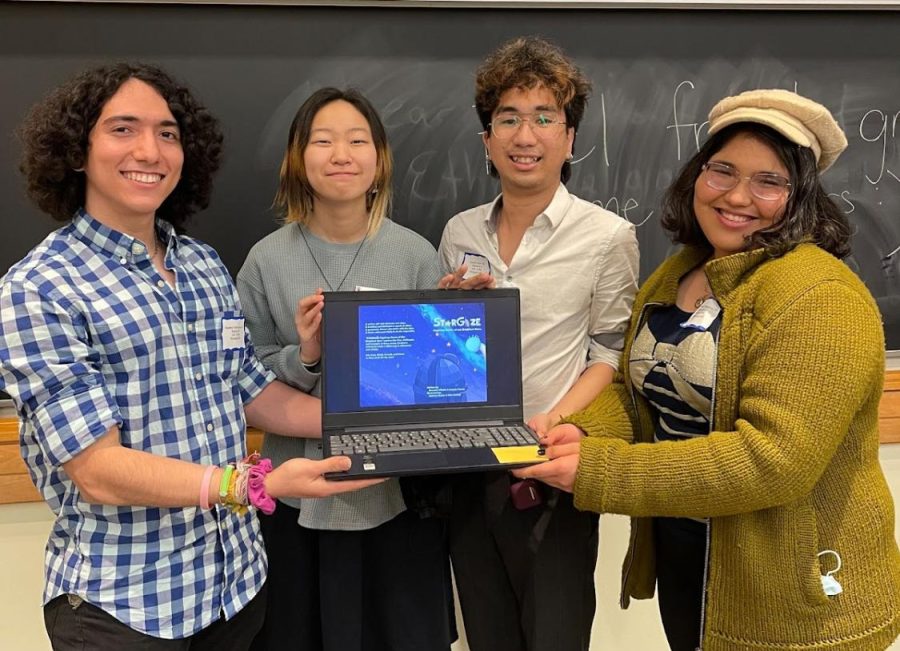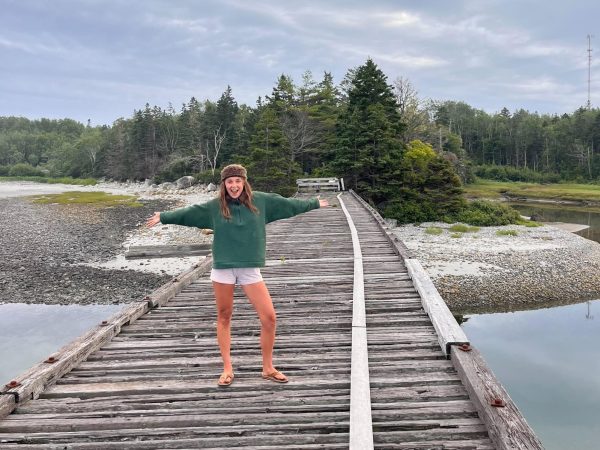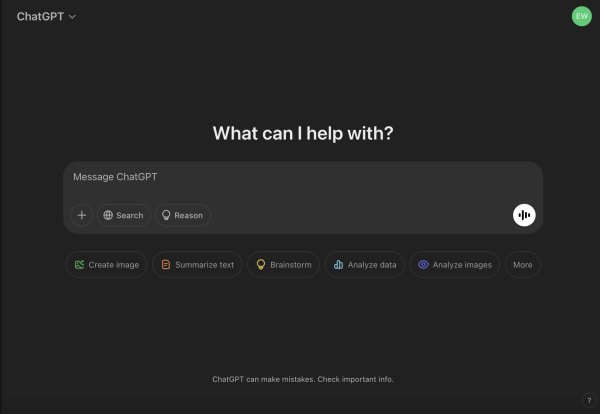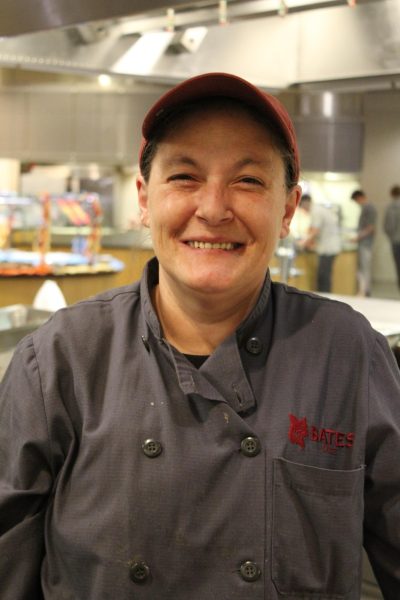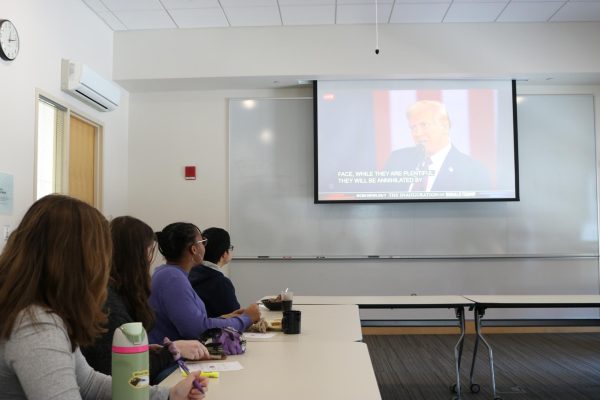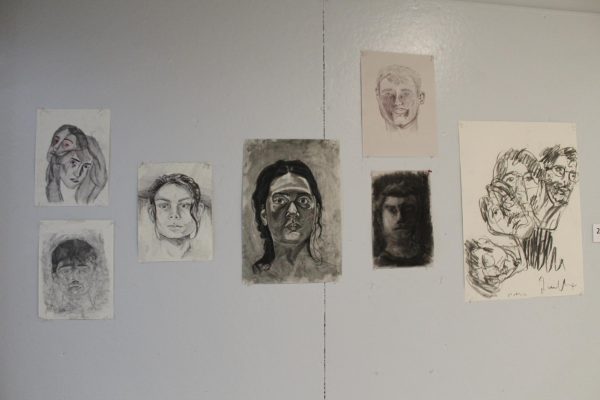Look up! It’s a bird! It’s a plane! Nope, it’s the New York Times’ next Best Seller!
It comes with no surprise that the Mount David Summit showcases some of the best work of our student body. The projects, presentations and experiments not only inspire others to possibly take on their own project but also attack some issues that many of us have faced in our time.
A standout presentation at Mount David that perfectly encapsulates the essence of the summit is a children’s book called Stargaze. Written by first-years Adriana Pastor Almiron ’25, Brandon Gustavo Villalta Lopez ’25, Joaquin Torres ’25, and Kira Y ’25, Stargaze showcases the stories of four children of color that each relate to science, technology, engineering and mathematics (STEM).
This book beautifully and gracefully addresses the problems that people of color face in the STEM world while also inspiring younger generations to persist and shoot for the stars (literally and figuratively). I had the pleasure of interviewing these amazing first-years about the process of writing the book, what inspired this idea, and where they want this book to go.
Make sure to keep empty space on your bookshelf for when Stargaze is published and ready to buy!
1. As I’m sure you’re asked all the time, what inspired you all to write this book? Give us a little backstory!
Adriana Pastor Almiron ’25 (APA): Personally, I wanted to do something that was not only a solution to a problem but also an inspiration for other people, especially children. Why a book and not something else? Because words can have a strong impact on kids. It allows them to visualize what the words describe with a little help from the illustrations, and I hope that creates lasting memories in them.
Brandon Gustavo Villalta Lopez ’25 (BGVL): I think that, despite our shared motivation and goals, we probably had our own little stories and perspectives that inspired us in our own ways. Personally, I wanted to help create something that would have allowed a six-year-old me to go to my parents, point at some drawing of an astronaut, and say “look, that will be me, I want to do that.” I’ve been privileged enough to aspire toward a career in STEM despite growing up in an environment that lacked examples of incentives (as the first and second generation to college on each side of my family, and the first one to pursue a career in STEM). But I know how inspiring representation can be, it allows you to dream, expand your perception of what’s possible, and reach for the stars. Representation is incredibly powerful, and it shouldn’t be a privilege. So that’s what we’re trying to do (albeit on a small scale): to extend the reach of representation in STEM to those who’ve been marginalized, discouraged from the opportunity to explore the boundaries of what we know, and allow them to see themselves reflected on those illustrations and their stories narrated by those words.
Joaquin Torres ’25 (JT): In our brainstorming stage, we were set on making our target audience children, because we believe that starting early was the most effective way to solve problems. Coming up with the problem took longer–we had several options, but ultimately decided on the underrepresentation of minority identities because it encompassed everything we wanted to do and was a lot more personal to all of us.
Kira Y ’25 (KY): As a child, books were a big part of my life. I remember reading so many books, and despite the [number] of those books, I recognize that each one of them has inspired me and taught me something that I still treasure today. When deciding what to do for our class project, I immediately thought of making a children’s book because I wanted to make something that doesn’t just exist, but will permanently exist in people’s hearts and will become part of their positive experience.
2. In the introduction of the book, you guys talk about communication through storytelling and its overall importance. Can you elaborate on that more and how it factored into the process of writing this book?
APA: Humans love stories, we have been telling them and listening to them for a long time. Children in particular have an incredible ability to engage with stories. They are not bothered by fantasy or exaggerations. Thanks to this, they respond strongly to the stories they are told, they pretend they are the characters and imitate them. If through storytelling we can get them to admire our characters’ persistence and kind-hearted nature, I am sure they will have a little more strength to fight against the obstacles of being a minority in STEM.
BGVL: We know that, for better or for worse, there’s a power in storytelling that far outweighs the convincing nature of sharing facts and data. Storytelling has been a natural part of human communication for as far as prehistory can tell. But in the end, storytelling is just a tool, and the “goodness” of its impact is dependent on the user. Thus, we decided to put it into good use and turn those unfair statistics we discussed in our presentation into stories that would cause an emotional response. We gave names to those underrepresented minorities so that they don’t only live in our audience’s brains but also in their hearts. There’s also the obvious reason: this book is for children. It would be challenging for children to engage with a 20-page essay (with cited reliable sources) on how the underrepresentation of marginalized identities within STEM undermines any effort for social justice and equity. However, any child would (hopefully) fall in love with our characters, follow their struggles, and celebrate their victories. In the end, the message we’re trying to send is the same, but with the additional intent to ignite an inquisitive spirit in those young readers that venture through our pages, show them that they’re not alone and that they can reach the stars, too.
JT: Stories are an important part of human civilization and are the reason why we know what we know today. On a more personal note, stories shaped my life–I grew up reading books and watching shows and movies, sharing stories with my mother, and creating my own whether it’s through writing, making art, or performing. Storytelling is such a powerful and intimate tool to show others what it means to be human, to impact the world in some sort of way. This is why we chose to share stories through this book, to show readers what it means to be a scientist, and that there is no one way to define who gets to do science aside from the passion to do so.
3. The four child characters in the book seem to face challenges that not even some adults can handle themselves. How were you all able to find the balance between tackling hard-hitting issues while keeping that childlike joy and ambition?
APA: I can mostly speak for the illustration side here, but for me, it was mostly about mixing and matching colors to describe the mood of the story while keeping it as fun as possible. Characters are mostly drawn as kids, to emphasize our audience, and even when the text describes a difficult situation, our characters are smiling or taking action to solve the problem.
BGVL: That was one of our main challenges as we were making the book. As a writer, I literally had a blank page, an open book waiting to be filled, but how?
Because of our target audience, the stories needed to be simple and engaging, but because of our goal, they also needed to be meaningful and convincing. That was a very challenging balance to find, and it required several layers of work in order to get there.
If I were to name it, I’d say we (writers) pursued a “water-down” approach where we drew upon our more academic work discussing these issues for our FYS STEM Scholars, and constantly, methodically, translated and simplified those ideas into more appropriate pieces. All in all, we were fortunate enough to come across the magic word that would guide us throughout this process: Hope. (as a fun fact, that’s what the doll’s name in Irawo’s story, “Irati,” translates to in Yoruba, a West-African language I chose to honor the painful past of slavery as well as the current struggles of those of African descent that face racial discrimination just like Irawo does in our story). We sprinkled our stories with hope, in every word, in every stroke. I always admire that innocent but powerful sense of wonder we seem to lose after childhood, so I tried to portray these stories as seen through those lenses.
JT: Writing for a younger audience was definitely my biggest challenge. I was so used to my readers being my peers or teachers, so the language I use often is very academic or unpalatable for kids. I remember writing Hoshi’s story and quite explicitly describing transphobia, to which Brandon told me to take a step back a little. This collaboration was a defining aspect of writing this book, and communicating ideas and feedback allowed all of us (not just me) to really figure out how we can make this presentable to our younger audience.
KY: As an illustrator of the book, I had difficulties finding that balance. The conclusion I found was to not make the protagonist explicitly despair when facing those challenges and to make their final scenes be filled with joy. When drawing those, I kept asking myself “how would I (as a child, and a person of a minority group) feel when seeing this page?” and “what will I wish to see?” I concluded that I do not want to see a protagonist looking like myself look hopeless because of how they look, instead, I would want to see myself remaining strong, and becoming stronger to reach for the future that I deserve.
4. You’ve all said before that the stories in the book were inspired by real people. Who are these people? And, on top of drawing from their stories, did you guys draw from your own stories and experiences?
JT: Our main inspirations are definitely the trailblazers who have proven that differences are not an obstacle to doing science and change-makers who have made STEM a more inclusive, diverse, and equitable field (who we also learned about in class): Chanda Prescod-Weinstein, Sandra Cauffman, Maria Teresa Ruiz, Ben Barres, Elizabeth Rush, Mae Jemison. We wanted to convey their stories and adapt them into more fantastical and magical tales, in which kids will not only be able to see themselves but also enjoy and understand the stories. Of course, our own experiences definitely influenced the stories as well. We all have identities that marginalize us, or disadvantage us in some way, and so we can’t help but to relate our own stories to our writing. We have faced challenges that reflect those that our STEM inspirations have overcome, and so in essence, our stories also intertwine with the stories in our book.
5. Judging from the Mt. David Summit presentation, I can tell all of you had a blast writing this book. What was everyone’s absolute favorite part of this journey? What does everybody look forward to happening?
APA: My favorite part was choosing the colors we were going to use for the book. [It] was a compromise between artists and writers. Choosing this is quite harder than one might expect. I had to represent the theme of the book, our audience, and ourselves. In the end, we settled for a mainly purple background with as many accent colors as possible. I think it turned out great!
BGVL: What I love more than anything from our journey has been our shared enthusiasm, as well as that of our peers and professors who have supported us along the way. It has been such an enjoyable experience to simply work on something we’re so passionate about.
There’s also something that holds a very special place in my heart from our book, which is what I shared in our presentation and also in that little fact about the names in Irawo’s story: The names of our characters. We decided to find languages that could honor the identities we were trying to represent in our stories and found a word for “star” that could fit their names, like the dead language from the Diaguita who are native to the lands that are now occupied by the giant telescopes in Chile, for which I had to dig into digital libraries until I could find a small dictionary from Diaguita to Spanish that fortunately contained the word “Cara.” I think you’ll receive a very similar response from everyone else when I say that the thing I’m most excited about is our book finding its way to children’s hands. We’ve contacted a couple of people who might help us start our publishing process, and we’ll be working on that during Short Term and, if necessary, throughout the summer and beyond, until we can hold a physical copy of our published book, the same that will hopefully be found in the children section of libraries and bookstores, someday. And we’re also in contact with someone from the Auburn Public Library to do a visit in which we could read our book aloud to children.
JT: I keep repeating this but my absolute favorite part about this whole process was the support we got along the way – from our friends who pester us about the next drawing or turning our art into stickers every time we eat lunch with them, to our professors and advisors who have constantly encouraged us and shown us how we could further attain our goals related to this book. Seeing everyone around us get excited about our project excited us, too, and made us feel that what we are doing mattered. Even in our future goal of publishing Stargaze and sharing it with a wider audience, everyone has been beside us, and it fills my heart with a lot of joy and love seeing this overwhelming support.
KY: My favorite part was drawing the characters, especially the scenes where they achieve their dreams. Starting was always tricky, but once I started drawing, I began loving the characters more and more. Thinking that they will be representing the minority groups like me and will be inspiring people to pursue their dreams, the characters appeared to be so special to me and it felt like an absolute honor to be able to shape their beings.
6. Finally, if readers could only take away one message from this book, what would you all want that message to be?
APA: For our target audience, it doesn’t matter who you are, if you want to do something, not only in STEM but in any field, I assure you that you have the ability to do it. Even if you are faced with more obstacles than others. And on a side note, for people who want to support diversity, you just need to find others like you to create a project you can be proud of and inspire others! Tiny contributions matter.
JT: You are powerful, and you are capable of getting shit done even if you think your differences disadvantage you. STEM (and let’s be honest, every field possible) is for everyone, and no one can tell you otherwise. Your identity matters in every space that you insert yourself in, and you should be fucking proud of that.
KY: No matter what environment you are in or what other people tell you, I don’t want you to give up on your own worth. As a person of a minority group, there were many times I told myself negative things and believed that I couldn’t achieve anything; but that is completely false and anybody deserves to value themselves. Also, I believe that experiencing such pain and difficulty makes people be kind, and with the love for themselves and the kindness for others, I want the people to build the future that everybody deserves.
Your donation will support the student journalists of Bates College and help us cover our annual website hosting costs.


